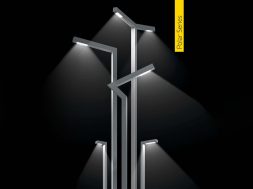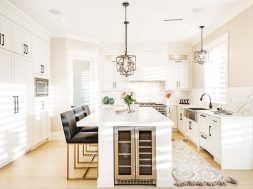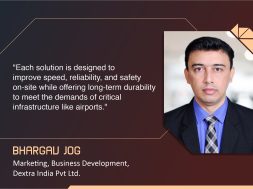A balanced approach to lighting

This interaction discusses the importance of careful selection of lights and the right approach to achieving an aesthetically pleasing look without compromising functionality.
Can you share details on one of your finest projects and walk us through the concept, challenges faced, and the kind of lights used in the lighting design?
I want to speak about one of my projects, lighting a residential bungalow in Pune, which included interior, outdoor, and swimming pool areas. The project was fascinating because of its size and modern architecture and because there was plenty of room to experiment with different design approaches. We had to keep the lighting design understated but sufficiently illuminated in the home theatre. Due to the large interior and landscape spaces, regular modifications were made to the various functional areas and themes to suit the tastes of clients.

What is your design aesthetics when it comes to lighting? Are specific themes, styles, or elements consistently inspiring your work?
My primary goal as a lighting designer is to create designs that complement the architecture of that space. The emphasis is mainly on designing a glare-free, minimalist lighting plan with layers of lighting such as indirect-direct, decorative, and accent. The dance of light and shadow largely inspires my work.
Can you outline the steps to ensure energy efficiency in your lighting designs?
Some strategies I follow to ensure energy efficiency include using well-engineered LED fixtures for all indoor and outdoor applications, timers, lighting automation and dimming systems, occupancy sensors for indoor applications, and considering solar-powered lights wherever possible. These systems allow precise control over the duration and intensity of lighting, ensuring that lights are used only when required. I also use minimum light levels for any application and resort to artificial light only when necessary. I maximise the use of natural light, especially in indoor spaces.
How do you ensure that the lights in your design are consistent for an optimally lit space?
I strive to design lights that promote the right placement of the right fixtures, minimise energy consumption, and provide maximum output for the required task. I recommend incorporating different layers of lighting, such as ambient, indirect, wall grazing, wall washing, accent, and decorative lighting. I aim for a balanced approach to lighting design, incorporating spatial awareness and aesthetic considerations. This results in visually appealing spaces that avoid the negative impacts of excessive or poorly placed lighting.

What recent lighting innovations/tools/technologies do you find the most exciting to use in your projects?
LED lighting technology has dramatically revolutionised the lighting sector in recent years. The technology has allowed us to regularly improve various types of light fixtures that are frequently introduced into the market. Other innovations include software such as AutoCAD for mapping lighting plans, Dialux Evo for 3D lux calculations, Photoshop for showing lighting effects on 3D views, and lux meters for measuring the actual lux levels after a project is completed.
Some of the strategies that I follow include using light only when it has a clear purpose, using direct light only where it is needed, incorporating light levels that are no brighter than necessary, employing dimming systems, motion sensors, and timers to use light only when necessary, and adhering to warmer colour lights, which will help minimise glare and visual discomfort
For more information, visit: https://www.gaushlightingdesigners.com/
Cookie Consent
We use cookies to personalize your experience. By continuing to visit this website you agree to our Terms & Conditions, Privacy Policy and Cookie Policy.










